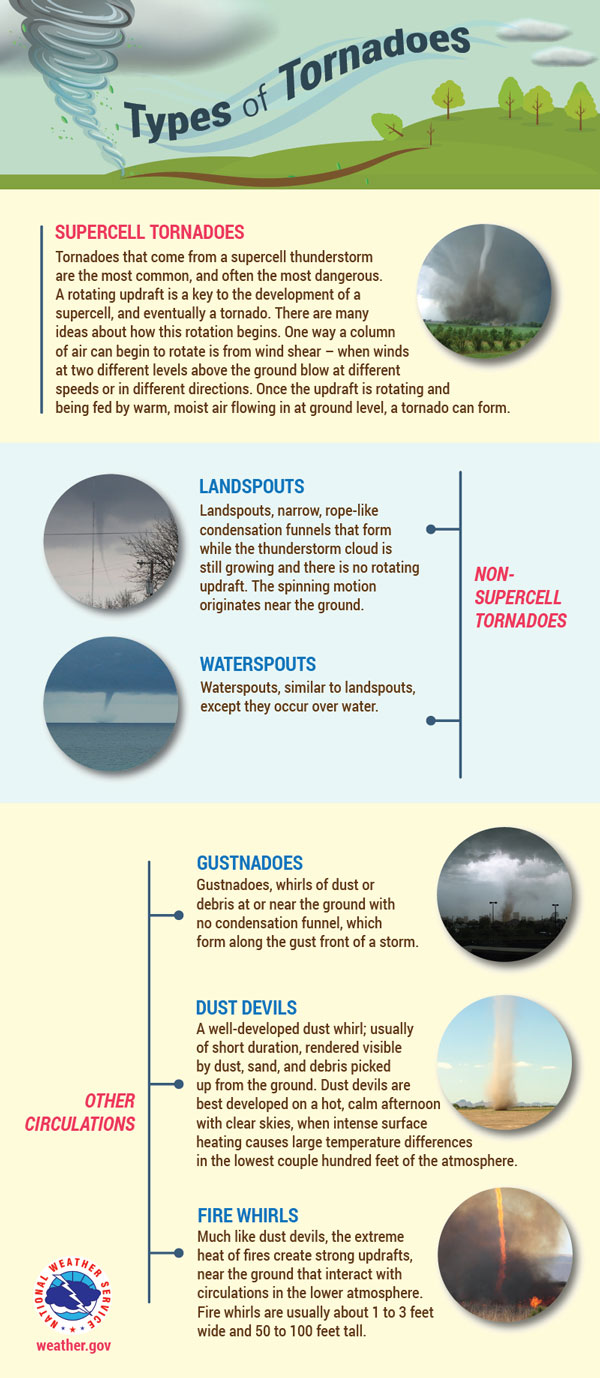They came with little warning—six powerful tornadoes that cut a destructive path across central Alabama, killing 23 people and injuring at least 90.
One of the twisters—an EF-4 packing 170-mile-per-hour winds—left a path of destruction at least 24 miles long.
For South Florida residents, the powerful tornadoes could serve as a reminder that the 2019 Atlantic hurricane season is just around corner. But what those residents shouldn’t do is confuse tornadoes with hurricanes.
 “Sometimes, people erroneously interchange these two types of storms,” said Brian McNoldy, senior research associate at the University of Miami Rosenstiel School of Marine and Atmospheric Science. “The only thing they have in common is strong winds; outside of that, they are entirely different phenomena.”
“Sometimes, people erroneously interchange these two types of storms,” said Brian McNoldy, senior research associate at the University of Miami Rosenstiel School of Marine and Atmospheric Science. “The only thing they have in common is strong winds; outside of that, they are entirely different phenomena.”
McNoldy, who maintains a blog, Tropical Atlantic Update, and has been the tropical weather expert for The Washington Post’s Capital Weather Gang since 2012, sheds more light on the destructive nature of tornadoes and answers some important on how they compare to hurricanes.
Where do tornadoes and hurricanes mostly strike?
In the U.S., tornadoes are most commonly found in the Great Plains states, but have been known to occur in almost every state. They require a parent severe thunderstorm, and a list of atmospheric conditions that is fairly well known. If a tornado forms or passes over water, it’s called a waterspout, but for the most part, tornadoes “prefer” land. Hurricanes, on the other hand, require a warm ocean to form and strengthen. Once over land, hurricanes quickly weaken. Only certain islands and coastal areas can be hit by a hurricane, though sometimes side effects can extend further inland (strong winds, flash flooding, tornadoes).
How intense are the two systems?
While both types of storms are capable of producing destructive winds, tornadoes can become stronger than hurricanes. The most intense winds in a tornado can exceed 300 miles per hour, while the strongest known Atlantic hurricane contained winds of 190 miles per hour. The scales used to categorize the two are also different. Tornadoes are ranked on the Enhanced Fujita Scale, while hurricanes are ranked on the Saffir-Simpson Scale. Beyond about 120 miles per hour, winds are powerful enough to significantly damage or destroy structures.
How do they differ in size?
While a very large tornado might reach 2 miles across, typically they are much less than a half mile across. Hurricanes, on the other hand, are several hundred miles in diameter. Even the eyewall (the inner ring of the most intense winds) is typically about 25 miles across. Rainbands in the outer circulation of a hurricane can spawn multiple tornadoes simultaneously, while there is no way for the opposite to occur. Tornadoes are completely dwarfed when it comes to a size comparison.
The tornado that struck the rural community in Alabama came so fast that there was less than 10 minutes of warning time. How do tornadoes and hurricanes differ in predictability and warning?
There is a huge difference in the timescales involved between tornadoes and hurricanes. While the large-scale environment that is favorable for tornado development can be predicted several days in advance, there is presently no way of predicting individual tornadoes even HOURS in advance. Once a rotating thunderstorm forms, there is still no way of knowing whether or not it will spawn a tornado, or how strong that tornado will become. A tornado warning is issued an average of 13 minutes prior to impact, giving people a very limited amount of time to take shelter. Sometimes that lead time is longer, sometimes shorter. Conditions that are favorable for hurricane development can also be predicted several days in advance. But since they usually form over the open ocean, they don’t immediately affect people. There can be anywhere from a day to well over a week before the storm hits land, if it ever does at all. Hurricane warnings are issued up to 36 hours before strong winds are expected to affect land, giving people time to prepare themselves and their houses as best they can. Also, due to the difference in time scales, people can evacuate an area prior to a hurricane landfall, but there is no time to evacuate an area before a tornado strikes.
How do hurricanes spawn tornadoes?
Hurricane-spawned tornadoes are typically generated in the outer rain bands of land-falling hurricanes (hundreds of miles away from the center), and in particular, in the front-right quadrant of the storm. This is where the wind profile resembles that of a “regular” tornado-producing thunderstorm.
How do you prepare for each system?
In both cases, having a plan in place before a storm comes is very important. When the time comes, putting that plan into action will be stressful enough. For a tornado, the most critical part of a plan is knowing where you and your family will take shelter; it might be an interior closet or bathroom, a basement, or a storm shelter. Tornadoes are such short-fuse violent events that you may not have time for much else than protecting life. Hurricanes are much easier to prepare for and allow for more elaborate planning. You will have time to protect your house with window coverings, buy supplies, organize important documents, and evacuate if necessary. If you don’t evacuate, then it’s very similar to a tornado: find the safest location you can to stay for the duration of the storm. While a tornado will pass over in a matter of seconds or minutes, a hurricane will take several hours to pass over. In both cases, no shelter is perfect—the most severe tornado or hurricane is capable of such destruction that even the best plan and best shelter may prove insufficient.

